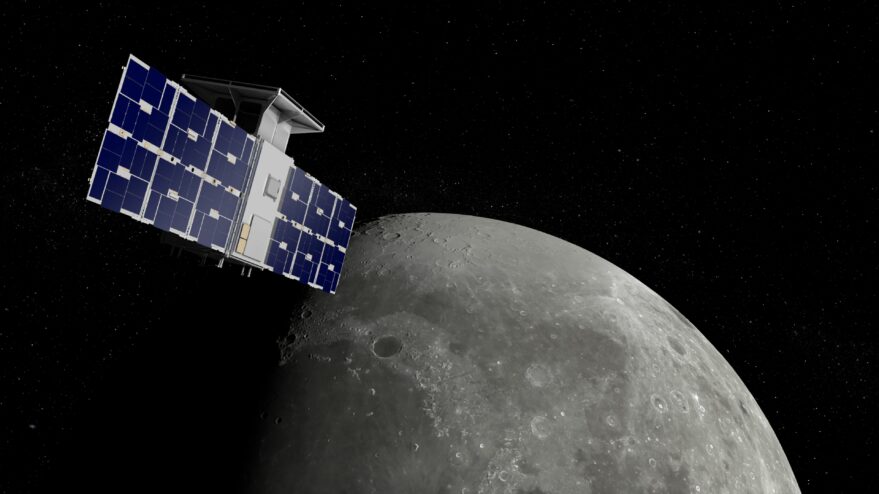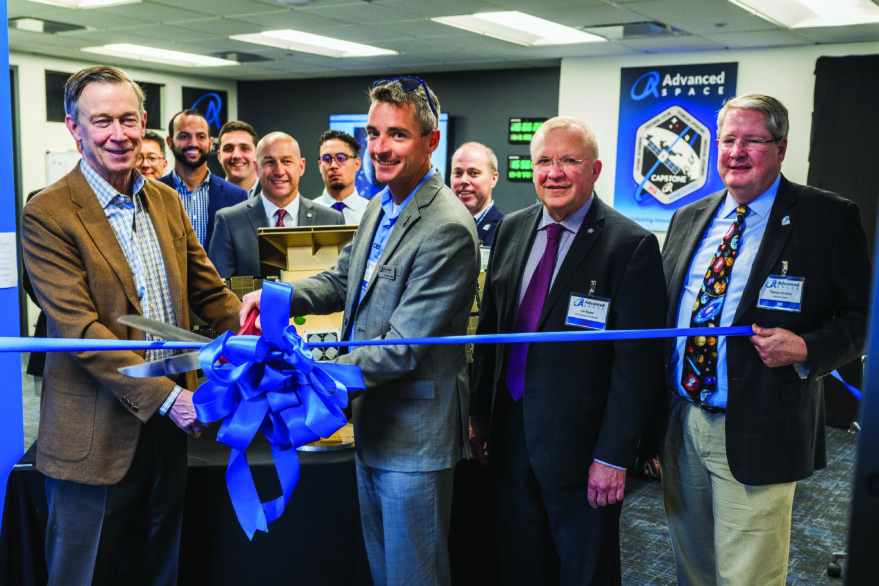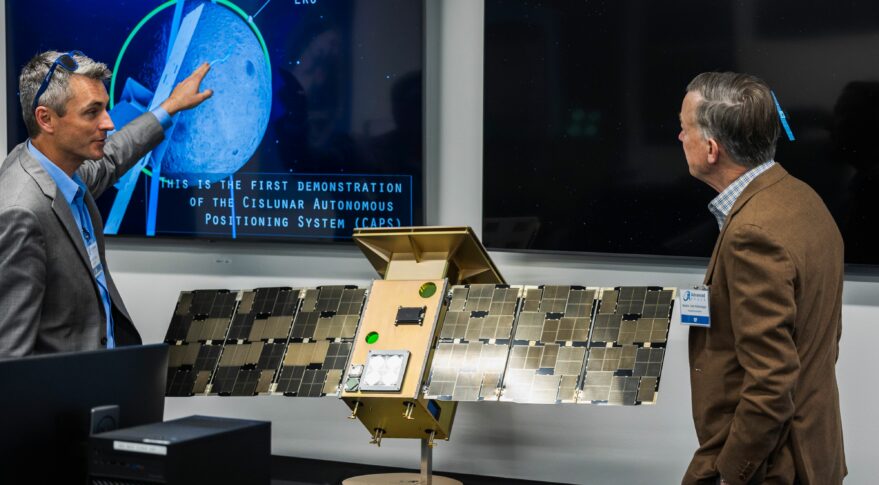BOULDER, Colo. – NASA’s intention to replant bootprints on the moon is getting a kick-start by the launch of a microwave oven-sized smallsat, the Cislunar Autonomous Positioning System Technology Operations and Navigation Experiment, called CAPSTONE for short.
Due for launch no earlier than May 3, CAPSTONE is owned and operated by Advanced Space of Westminster, Colorado. It is to be lofted from New Zealand aboard a Rocket Lab Electron rocket and sent moonward by Rocket Lab’s Lunar Photon upper stage.
Thomas Gardner, Advanced Space’s director of engineering, said the spacecraft would reach its lunar destination on or about Sept. 15.
Critical partners in the CAPSTONE mission include Tyvak Nano-Satellite Systems, Inc., a Terran Orbital Corp. company that provided spacecraft design, development and implementation, hardware manufacturing, assembly, testing and mission operations support. Stellar Exploration is the propulsion subsystem provider.

Weighing 25 kilograms, CAPSTONE is no lightweight when it comes to its duties. A central objective is to test and verify the calculated orbital stability of a near rectilinear halo orbit (NRHO) around the moon. That’s the same orbit scripted for NASA’s lunar Gateway, the small space station planned to orbit the moon to provide astronauts access to the lunar surface.
Another key task for CAPSTONE is testing a navigation system that gauges its position relative to NASA’s Lunar Reconnaissance Orbiter, which has been studying the moon since 2009. This demonstration of spacecraft-to-spacecraft navigation — a proprietary peer-to-peer navigation capability named Cislunar Autonomous Positioning System (CAPS) — can allow future spacecraft to determine their location relative to the moon without relying exclusively on tracking from Earth.
In January, Advanced Space entered into a Cooperative Research And Development Agreement with the U.S. Air Force Research Laboratory’s Space Vehicles Directorate and Spacecraft Technology Division to share data collected from cislunar space through the CAPSTONE mission.
Ribbon cutting
Advanced Space staged an April 1 ribbon-cutting for its Mission Operations Center Facility, complete with a full-size spacecraft model of CAPSTONE on display. Attending the event was Jim Reuter, NASA ssociate administrator for space technology, as well as U.S. Sen. John Hickenlooper (D-Colo.), chairman of the Senate Commerce space and science subcommittee.

CAPSTONE is a foundational mission, Reuter said, a pathfinder for NASA’s Artemis program to return humans to the moon. “Technology demonstrations like CAPSTONE are the result of continued investments in space technology,” he said.
NASA’s Space Technology Mission Directorate supports CAPSTONE’s development via the Small Spacecraft Technology and Small Business Innovation Research programs at NASA’s Ames Research Center, Mountain View, California.
Hickenlooper said Colorado, on a per capita basis, has one of the largest space economies in the country, citing a figure of $15 billion a year.
CAPSTONE is an example, Hickenlooper said, of what happens when the right people are brought together, and they move in an orchestrated, synchronized fashion to get things done.
“I think that NASA’s Artemis program is really going to excite this country,” Hickenlooper added. “We are in a serious, very important competition with China and Russia to a certain extent.”
Hickenlooper said that it’s an “all hands on deck” situation “if we’re going to compete on a global basis in science and space.”
Reuter told SpaceNews that CAPSTONE is pushing the boundaries of low-cost spacecraft and signals what small spacecraft can accomplish, not only at the moon but other deep-space destinations.

